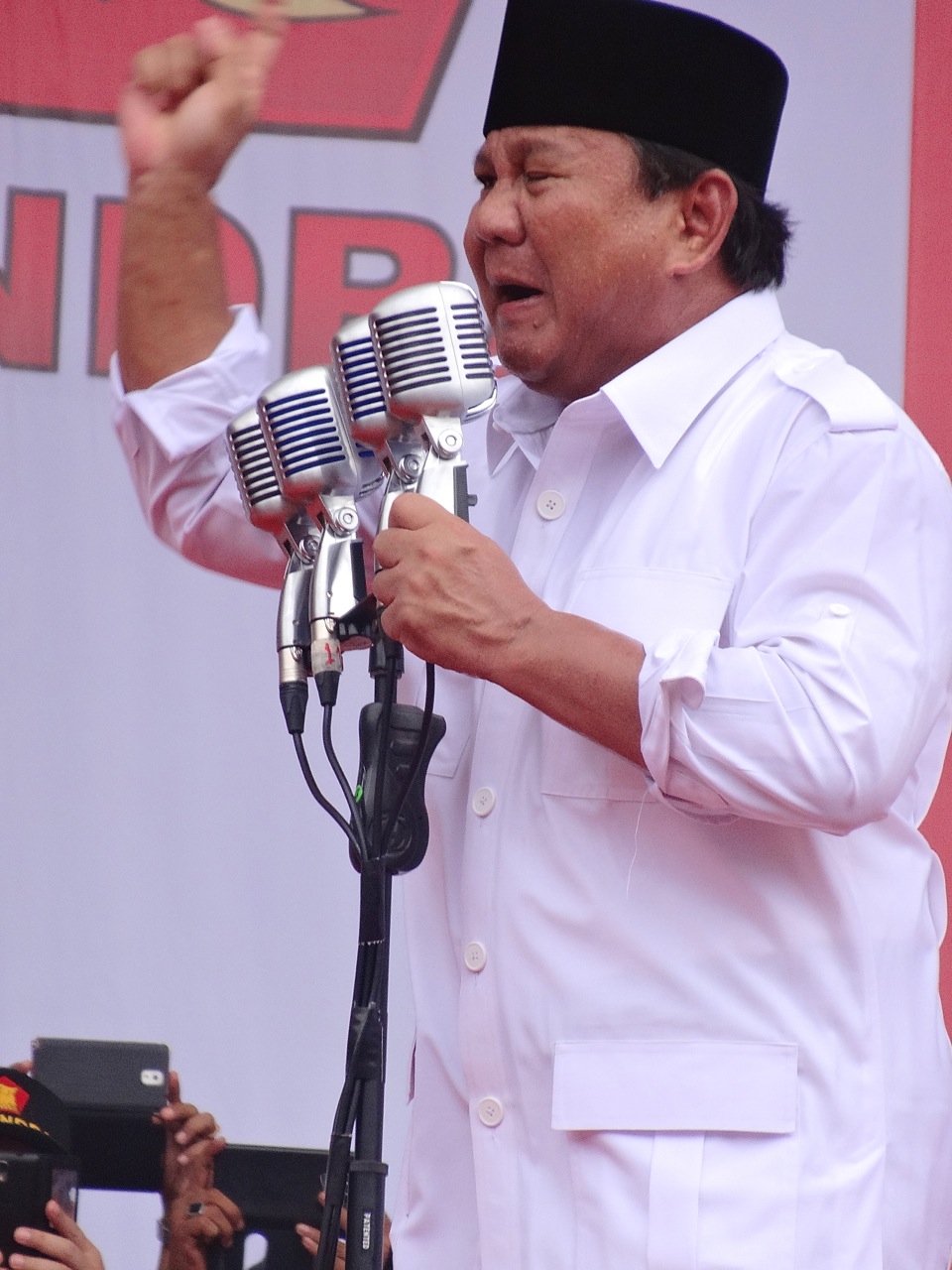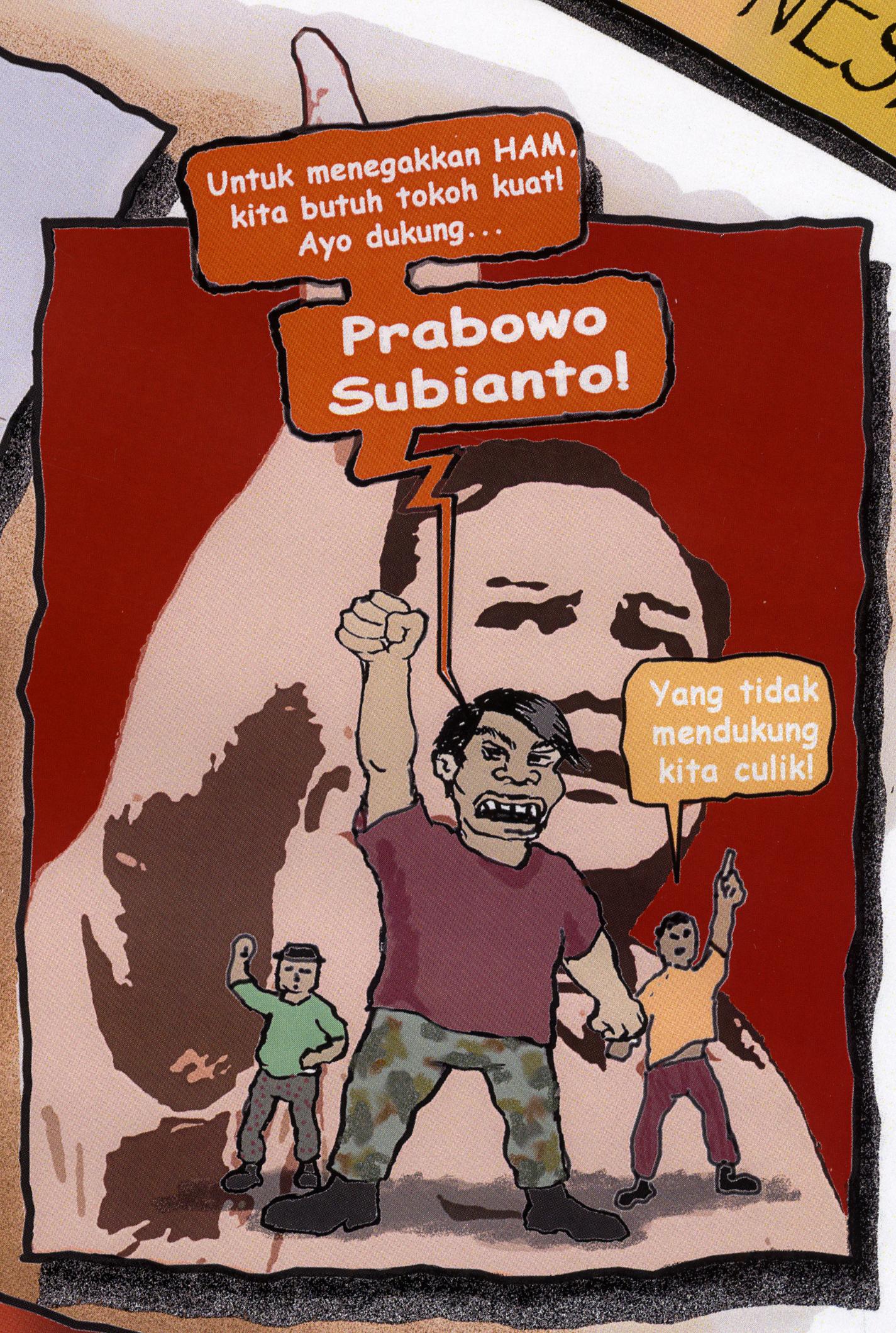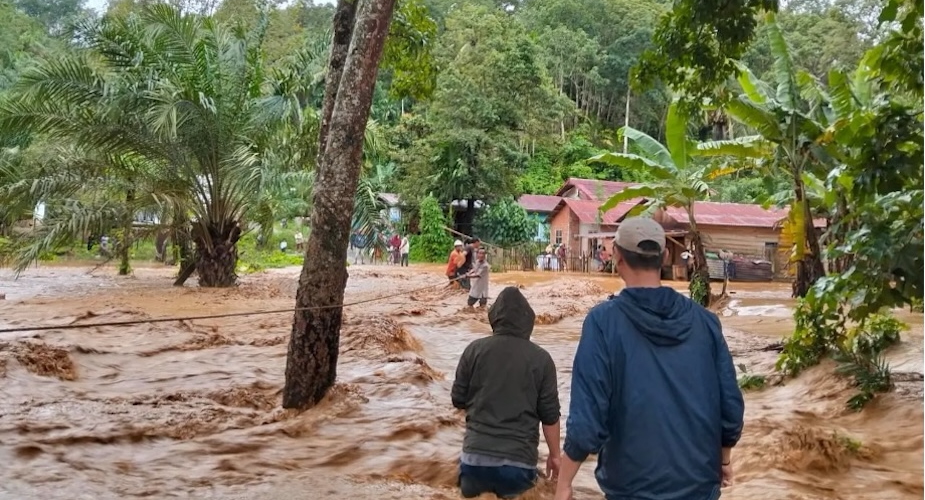Jakarta 1998 was bad, but Prabowo likely had more blood on his hands in East Timor
Gerry van Klinken
As everybody knows, one of the strongest candidates for the presidency has an image problem, related to his army days. But abducting a couple of dozen student activists in 1998 is not Prabowo’s worst human rights problem, though it’s what he’s best known for. Fifteen years earlier he was in the middle of a counter-insurgency operation in East Timor that claimed many hundreds of lives. It started on 16 September 1983 with the massacre of dozens of people, including women and children. They had surrendered to Indonesian soldiers after coming down from Mount Bibileo near Viqueque. A survivor told the East Timorese truth commission CAVR:
"Three Hansip [civil guards] led the way and other military personnel surrounded the group of people so no one could escape… We started to walk at around 3.00pm and arrived at the location on the mountain at approximately 4.00pm…We sat down and again military personnel surrounded us to avoid any escapes… Then more Indonesian soldiers arrived… When they arrived we were given the order to stand up. I was standing, along with everyone else, facing the valley. Then we were told to walk. I took one step and the Indonesian soldiers opened fire on us. I fell to the ground, along with my brother. People who had been shot fell on top of me. The Indonesian soldiers shot everyone in the back. Then the gunfire ceased and the soldiers were having a rest and a cigarette. One member of the Indonesian army told M303 [a Hansip commander] to speak in his language, Tetum, and tell anyone who was still alive… to stand up. No one answered this command. Then the soldiers opened fire again, on the bodies lying there. Then I heard two small children, one girl and one boy, [who were] about 1-2 years old. When they shot, they had missed the children. Then M303…went over to the two babies and took a knife and stabbed them to death. Then the Indonesian [soldiers] and Hansip took another break and had a cigarette."
Chega!, the CAVR report, has 55 names of people killed on that day. On the next day, another massacre took place nearby, again of East Timorese who had surrendered off Mount Bibileo. Chega! lists 141 names for that one. Altogether Chega! has 530 names of people killed or disappeared during a counter-insurgency operation that ran into 1984, throughout East Timor. A large number also died of hunger in the closely guarded concentration camp for survivors from Mount Bibileo.
All journalists know about the abductions in 1998 that ended Prabowo’s military career. Few seem to know about this operation in East Timor in 1983, at the start of it. When Jakarta Post journalist Aboeprijadi Santoso last December did remember, Prabowo took the trouble to send a reader’s letter saying it was an ‘unproven allegation.’ So what do we know for sure about his involvement in these events, and what would we dearly like to be surer of?
Career breakthrough
In 1983 Prabowo Subianto, aged 32, was a captain in the Special Forces, Kopassandha. Later renamed Kopassus, this force was the New Order’s most trusted, most capable, iron fist. It is a miracle we know anything at all about his activities – elite forces mostly work in secret.
Prabowo’s career was on the verge of a breakthrough. He was intelligent and came from an elite family. But in the lower reaches of the Indonesian military of the early 1980s, that was not enough. Advancement required connections, and violence. Everything came together for Prabowo in 1983.
His astuteness won him repeated invitations to overseas training courses – to the American Fort Bragg in 1980, to the German GSG-9 probably in 1981, and later to Fort Benning in 1985. Each time he scored ‘top graduate.’ In 1982 he was invited, with Major Luhut Pandjaitan, to form a new anti-terror unit called Detachment 81 within Kopassandha, to try out his skills. He directly commanded a group within it called Chandraca 8. Indonesia had invaded East Timor in 1975, and this was his second tour of duty there. (The first was as a lieutenant in 1977-78, at the height of the fighting. He was involved in the killing of East Timorese resistance hero Nicolau Lobato, whose head was reportedly sent to Jakarta in triumph so President Suharto could verify the death for himself.)
Connections? Prabowo married the president’s daughter, Siti Hediati Harijadi (Titiek), in May 1983. They divorced in 2001, but throughout the New Order the access she gave him to the president was the envy of his fellow officers. He could afford to behave above his rank.
And then the violence. In April of that same year 1983, East Timor’s guerrilla army Falintil had signed a ceasefire with the Indonesian armed forces. For the Indonesian high command, it was the prelude to complete victory, but for the Timorese, it was a chance to regroup. Prabowo shared the view of some officers who opposed the ceasefire for that reason. During subsequent months, he would pop into East Timor without reporting to the commander responsible for the ceasefire, much to the latter’s discomfort. What did he have in mind?
Resurgence
On 8 August 1983, Falintil commander Xanana Gusmao made his move. The Indonesian military had put captured Falintil guerrillas to work as their auxiliaries. Xanana now asked a resistance leader in the east of the island, Ular Rihik (Virgílio dos Anjos), to persuade an entire detachment of such auxiliaries in the hamlet of Kraras to kill their Indonesian superiors and rejoin Falintil in the hills. Kraras was located on a plain just west of the town of Viqueque, and south of Mount Bibileo. The men killed 14 Indonesian army engineers. The attack definitively ended the ceasefire – though its agreed three months had already run out in July and Indonesian Armed Forces Commander General Benny Moerdani had then begun demanding a Falintil surrender. The uprising that began on 8 August 1983 is known in East Timor as the levantamento, or rising, because it signified the resurgence of a resistance movement that was almost beaten.
Knowing retaliation would follow, civilians and combatants alike then fled into the forests covering Mount Bibileo. Repression certainly did follow, and it seems Prabowo played a central role in it. Just how central is something we urgently need to know.
Indonesian Armed Forces Commander General Benny Moerdani was furious about the attacks and immediately ordered a counter-insurgency operation, which lasted for several months. The campaign resulted in hundreds of deaths. Some were of combatants. Increased fighting caused fatal Indonesian military casualties to rise from 163 the previous year to a reported 269 in 1984 (still much lower than the 600-700 deaths a year Indonesia had suffered immediately after the invasion).Falintil forces also suffered casualties at this time – a February 1985 resistance report wrote of 78 dead and wounded since August 1983. All the 530 killings and disappearances reported in Chega! for this period, however, were of civilians or of combatants who were no longer taking part in combat. International law regards such killings as unlawful.
Kopassus
Who was responsible for these unlawful killings and disappearances? Of all the perpetrators of abuses in East Timor throughout the period 1974 to 1999 reported in Chega!, Kopassandha/ Kopassus is the one unit associated with the highest number of violations. And the highest number of violations associated with the role of Kopassandha occurred during the 1983-84 suppression of the levantamento. (Kopassus indirectly caused even more suffering. Throughout the Timorese war it played the central role in the formation of militias that carried out so much of the Indonesian military’s vicious work for them, not least in 1999. Militias were a big part of Prabowo’s work with Kopassus. ‘I have this philosophy: the people’s army,’ he once told a foreign journalist. ‘We have to have the people on our side.’)
‘To uphold human rights, we need a strong leader. Come on, let’s support … Prabowo Subianto!’ ‘We’ll kidnap those who don’t support him!’ - Cartoon by Marto
What was Prabowo’s involvement in the 1983 violations? Cornell University’s journal Indonesia (October 2003) quotes a report that Prabowo arrived in East Timor for his third tour of duty on 28 August 1983, together with his Chandraca 8 unit of Kopassandha. Jill Jolliffe, in her book Cover-up: the inside story of the Balibo Five (2001), quotes an eyewitness who saw Prabowo scouring the Bibileo mountainside with his troops in early September, before the first big massacre. The levantamento was less than a month old. He remained in the eastern region around Mount Bibileo until early in 1984.
The township of Ossu lies less than 20kms north of Viqueque, on the road that runs across East Timor. Captain Prabowo had a base here throughout the counter-insurgency operation. João Caetano, an East Timorese who then worked for Indonesian intelligence, told Jolliffe that Prabowo directed the counter-insurgency operations in the region where revolt had first broken out from this place. Catholic nuns say they had to evacuate the girls schools for Prabowo and his men. None of the men wore insignias.
As the Indonesian operation swung into action, reports of death and torture quickly multiplied. Chega! lists the following incidents:
• The first reprisal by Indonesian military units took place on 7 September, resulting in all the houses at Kraras hamlet being burnt and the deaths of 4-5 civilians who had stayed behind.
• Many arrested civilians were tortured at a camp of Battalion 745 at nearby Olobai in subsequent days.
• Between 18 and 55 people who had surrendered to the Indonesian armed forces from Mount Bibileo, including women and children, were executed at Welamo near Caraubalau village on 16 September (the incident above). Chega! has 55 names.
• The single biggest atrocity occurred on 17 September. A large group of people, all males from Kraras who had fled to the village of Buikarin, were executed by machine-gunning in a riverbed at Tahubei. Chega! has the names of 141 victims, although reports of the number killed at Tahubein range as high as 181. Again, there is no information on whether these were civilians or non-active combatants. Chega! writes:
"Indonesian military personnel approached a large group of refugees from Kraras who had fled to the nearby village of Buikarin. The village of Buikarin was surrounded and those from Kraras were rounded up. The men were separated from the women and were told that they would be marched to Kraras under the supervision of the military to carry food. According to one report, 6-8 Indonesian soldiers and two East Timorese Hansip escorted dozens of men to Wetuku River in an area known as Tahubein, where they were surrounded and shot. Only four people are reported to have survived the massacre."
• Chega! includes many other descriptions of individual executions, sometimes in public, and of many disappearances and deportations, throughout September and October 1983 and into early 1984. They come from every district in East Timor but particularly from its eastern regions where Prabowo has been located by several eyewitness accounts.
Survivors of these horrors then faced more anguish in the months that followed. Everyone who once lived or hid on Mount Bibileo was relocated to a concentration camp at Lalerek Mutin, near the by-then abandoned Kraras on the flats west of Viqueque. The 1,300 inhabitants, among them a large proportion of women, children and old people, were kept on such a tight leash by their Chandraca guards that they could not tend their subsistence fields. The hunger was severe. One eyewitness told the CAVR: ‘I remember four or five people dying every day. We just wrapped them in mats and buried them.’ José Gomes, Lalerek Mutin village head at the time, estimates that more than 1,000 persons died between the events in Kraras and a census he conducted in 1984. Life only improved once the Chandraca 7 unit (not the one commanded by Prabowo) returned to Java in December 1985.
Research
The CAVR report on the killings of 1983-1984 runs to 27 pages. Other sections describe the hunger deaths, forced displacement, torture (including sexual abuse), and arbitrary detentions arising from the campaign. The unlawful killings alone were comparable in scale to the Santa Cruz massacre of November 1991, which shocked world opinion. The chain of one-sided murder that characterised the counter-insurgency operation following the levantamento was started by the two horrendous massacres of 16 and 17 September 1983. It is these events, and not (as Prabowo has suggested) the initial killing at Kraras on 8 August, that together carry the name ‘Kraras massacre’ in the memory of those who know the story.
The cautiously worded CAVR report does not name most of the Indonesian officers involved. But they can be read in, among others, the eyewitness accounts in Jill Jolliffe’s book, and in a long interview with the Indonesian governor of East Timor at the time, Mario Carrascalao, published in Cornell’s Indonesia (above). That Prabowo played a significant role in this operation seems clear, but precisely how significant is less clear. His rank and the Ossu base suggest he held a field command post in the eastern part of the country, where the levantamento had begun.
According to João Caetano, the massacre at Tahubein on 17 September was perpetrated by members of Kodim 1630/ Viqueque, Infantry Battalions 328, 501 and 745, and Kopassandha. Such a mix of military units was typical of Indonesian operations in East Timor throughout the war. Kodim 1630/ Viqueque was the local ‘territorial’ command (with associated civil guards, or hansip); Battalion 745 was a combat unit based in East Timor; Battalions 328 and 501 were ‘green beret’ Kostrad infantry units that spent much time on tour in East Timor. The Kopassandha officers were in charge, following normal practice. Two other Kopassandha officers mentioned in connection with the operation in the eastern region were Major Slamet Supriyadi (Chandraca 6) and Captain Harry Pisand Pinem (sometimes incorrectly listed as Heri Pisang, Chandraca 7). Caetano said he saw Pisand and his troops leaving Viqueque on the morning of the Tahubein massacre. The fact that Prabowo has not been identified by any living eyewitnesses as having been participating in killing does not mean he was not coordinating it from nearby.
Whatever exactly he was doing, it is clear that Prabowo’s bosses noticed his work and approved of it. Late in 1983, still in East Timor, he was promoted from captain to major – a high rank for a 32-year old.
The levantamento triggered a serious escalation of a guerrilla war that the Indonesian armed forces had considered settled in its favour since the mass Fretilin surrenders of late 1979. The Indonesian response was ruthless and claimed many hundreds of civilian lives. The CAVR report that describes the atrocities in such horrifying detail has never been reviewed in any Indonesian mainstream publication, let alone acted on by Indonesian justice officers. This silence has permitted Prabowo to claim they are ‘unproven allegations.’ Indonesian readers can now check for themselves – an Indonesian translation of the report is available online and is on sale in major bookstores in Indonesia.
When confronted with the Kraras story in 1998, Indonesian armed forces commander General Wiranto said of it nonchalantly: ‘To kill or be killed can’t be avoided in a war situation like this.’ There will be some who agree with Wiranto. But the president of a great nation like Indonesia must above all else protect human life. The people of Indonesia should hope that military indifference to human life won’t be carried into the presidential palace after 9 July.
Gerry van Klinken (Klinken@kitlv.nl) is professor of Southeast Asian history at the University of Amsterdam. Chega! was published in 2005 and is available online in various languages at http://www.cavr-timorleste.org/en/chegaReport.htm. A new English edition will be published in book form later in 2014.
An Indonesian translation of this article can be read here.













